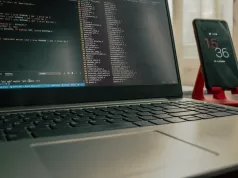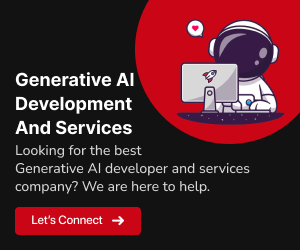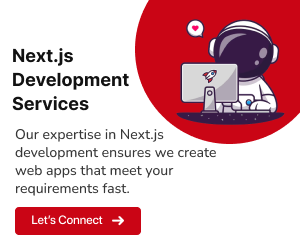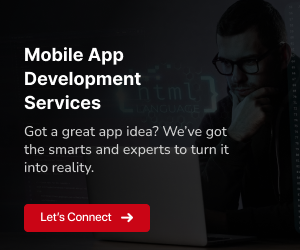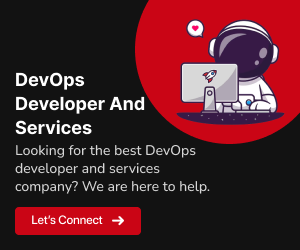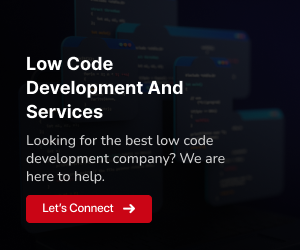Exploring Flutter Backend Development:
Flutter, known for its robust front-end development capabilities, seamlessly integrates with various backends to create powerful and dynamic applications. This section provides an in-depth overview of Flutter backend development, emphasizing the importance of choosing the right backend for optimal performance and functionality.
Overview of Flutter Backend:
Flutter itself primarily focuses on the front end, comprising the UI and user experience elements. However, to leverage the full potential of a Flutter application, a well-structured and efficient backend is crucial. The backend handles data, processes requests, and interacts with databases and external APIs.
Developers have the flexibility to choose from a variety of backend technologies, including serverless solutions, traditional server-based architectures, and cloud-based platforms. This diversity allows for customization based on project requirements and scalability needs.
Importance of Choosing the Right Backend:
The selection of a suitable backend is a strategic decision that influences the overall performance, scalability, and functionality of a Flutter application. Considerations for choosing the right backend include:
Scalability:
Ensure that the chosen backend can scale seamlessly to handle increasing loads as the application grows in user base and complexity.
Performance:
Optimize the backend for quick response times, minimizing latency in data retrieval and processing.
Database Integration:
Compatibility with databases that store and manage application data efficiently.
Security:
Implement robust security measures to protect user data and ensure the overall integrity of the application.
Developer Experience:
Choose a backend that aligns with the development team’s expertise and provides useful tools and documentation.
By carefully considering these factors, developers can ensure a harmonious integration between Flutter frontend and backend components, resulting in a reliable and high-performing application.
Options for Flutter Backend Development:
Choosing the right backend for your Flutter application is a critical decision that impacts performance, scalability, and overall functionality. This section explores various backend options, highlighting their features, parameters, and pros and cons to guide developers in making informed decisions.
Serverless Architectures:
Serverless architectures, such as AWS Lambda or Firebase Cloud Functions, allow developers to focus on writing code without managing server infrastructure. This approach is suitable for small to medium-sized applications with intermittent usage, offering automatic scalability and cost efficiency. However, serverless architectures may face limitations in customization and execution time constraints.
Features:
Automatic scalability:
Serverless architectures automatically scale based on demand, accommodating varying workloads efficiently.
Cost efficiency:
Pay-per-execution models in serverless platforms can lead to cost savings, especially for applications with irregular usage patterns.
Pros:
Focus on code without server management:
Developers can concentrate on writing application logic without dealing with server maintenance tasks.
Cons:
Limitations in customization:
Serverless platforms may impose constraints on available services and configurations.
Execution time constraints:
Some serverless platforms may have limitations on the maximum execution time for functions.
Traditional Server-Based Solutions:
Traditional server-based solutions, like Express.js or Django, provide more control over server configurations and are suitable for complex applications with consistent workloads. They offer customization, flexibility, and are compatible with various databases. However, managing servers can be resource-intensive, and scalability may require additional effort.
Features:
Control over server configurations:
Traditional server-based solutions allow fine-grained control over server settings and optimizations.
Compatibility with various databases:
These solutions support integration with different types of databases, providing flexibility in data storage.
Pros:
Customization and flexibility:
Developers have the freedom to tailor server configurations and application architecture to specific needs.
Cons:
Resource-intensive server management:
Maintaining and optimizing servers can require substantial time and effort.
Scalability may require additional effort:
Ensuring scalable performance might involve additional considerations and work.
Cloud-Based Platforms:
Cloud-based platforms, such as Google Cloud Platform (GCP) or Amazon Web Services (AWS), offer a comprehensive suite of services for backend development. These platforms provide scalable infrastructure, databases, and additional tools for various functionalities. Cloud-based solutions are well-suited for large-scale applications but may involve a learning curve and ongoing costs.
Features:
Comprehensive suite of services:
Cloud platforms provide an array of services, including databases, storage, and machine learning tools.
Scalable infrastructure:
The cloud infrastructure can scale horizontally or vertically based on application demands.
Pros:
Scalability for large-scale applications:
Cloud platforms can efficiently handle the demands of large user bases and data volumes.
Cons:
Learning curve:
Familiarizing oneself with a cloud platform’s services may take time.
Ongoing costs:
Utilizing cloud services often incurs regular expenses based on usage.
GraphQL:
GraphQL, a query language for APIs, allows clients to request specific data, reducing over-fetching and under-fetching issues. It provides flexibility in data retrieval, making it suitable for applications with diverse data needs. However, implementing GraphQL may require additional effort in setting up and optimizing queries.
Features:
Flexibility in data retrieval:
GraphQL enables clients to specify the data they need, reducing unnecessary data transfer.
Reduced over-fetching and under-fetching:
Clients receive precisely the data they request, eliminating the need for excessive data fetching.
Pros:
Flexible data retrieval:
GraphQL offers flexible data retrieval, reducing data transfer inefficiencies.
Cons:
Query setup and optimization:
Implementing GraphQL queries may require additional effort in setup and optimization.
Firebase:
Firebase, a mobile and web application development platform, offers real-time databases, authentication services, and cloud functions. It is suitable for projects requiring quick setup and real-time data synchronization. However, Firebase may have limitations in customization for highly complex applications.
Features:
Real-time databases:
Firebase ensures real-time synchronization of data, making it ideal for collaborative applications.
Authentication and cloud functions:
Firebase includes authentication services and serverless cloud functions for extended functionality.
Pros:
Quick setup:
Firebase offers a straightforward setup, allowing developers to start building quickly.
Cons:
Limitations in customization:
Firebase may have limitations for highly customized or complex backend requirements.
May not suit complex applications:
Projects with intricate backend logic might find Firebase limiting.
Explore the seamless integration of Flutter with a Python backend in our comprehensive guide: Flutter App with Python Backend.
Optimizing Performance in Flutter Backend:
Ensuring optimal performance in your Flutter backend is crucial for delivering a seamless user experience. This section explores various techniques and strategies to enhance the performance of your Flutter application’s backend, addressing common challenges along the way.
Efficient Database Queries:
Optimizing database queries is essential for improving overall application performance. Utilize indexing, caching, and query optimization techniques to ensure swift and efficient data retrieval.
Techniques:
Indexing:
Implement proper indexing on database columns to accelerate data retrieval.
Caching:
Employ caching mechanisms to store frequently accessed data and reduce redundant queries.
Query Optimization:
Optimize database queries by analyzing and refining their structure and execution plans.
Load Balancing:
Implementing load balancing distributes incoming traffic across multiple servers, preventing any single server from becoming a bottleneck. This enhances both scalability and reliability.
Techniques:
Distributed Traffic:
Distribute incoming requests evenly across multiple backend servers.
Scalability:
Improve the scalability of your backend by adding or removing servers dynamically.
Caching Strategies:
Effective caching strategies reduce the need for redundant computations and data fetching. Utilize caching mechanisms for frequently accessed data, computations, or API responses.
Techniques:
Content Delivery Network (CDN):
Leverage CDNs for caching and delivering static assets closer to end-users.
Memory Caching:
Implement in-memory caching to store frequently accessed data for faster retrieval.
Code Optimization:
Optimizing the backend codebase is crucial for efficient execution and resource utilization. Identify and refactor bottlenecks, and employ best practices for code optimization.
Techniques:
Bottleneck Identification:
Use profiling tools to identify performance bottlenecks in your backend code.
Code Refactoring:
Refactor code to improve readability, maintainability, and performance.
Scalability Planning:
Anticipate future growth and plan for scalability. Ensure that your backend infrastructure can seamlessly handle an increasing number of users and data volume.
Techniques:
Horizontal Scaling:
Scale your application horizontally by adding more servers to the existing infrastructure.
Database Sharding:
Implement sharding to distribute database load across multiple servers.
Real-time Monitoring and Analytics:
Implement real-time monitoring and analytics tools to gain insights into your application’s performance. Proactively identify and address issues before they impact users.
Techniques:
Logging and Tracing:
Implement logging and tracing mechanisms for real-time insights into application behavior.
Performance Analytics:
Use analytics tools to track and analyze backend performance metrics.
Choosing the Right Backend Architecture for Flutter:
Selecting the appropriate backend architecture is a pivotal decision in the development of Flutter applications. This section provides an overview of various backend architectures and offers guidance on choosing the best architecture tailored to Flutter app requirements.
Monolithic Architecture:
Monolithic architecture involves building the entire application as a single, tightly integrated unit. This approach simplifies development but may face challenges in scalability and maintenance.
Overview:
Single Codebase:
Monolithic architectures have a single codebase for both frontend and backend components.
Easy Development:
Development is streamlined, as everything is within a unified codebase.
Pros:
Simplicity:
Easier to develop and deploy due to the consolidated codebase.
Code Reusability:
Components can be reused across different parts of the application.
Cons:
Scalability Challenges:
Scaling can be challenging, as the entire application must scale together.
Maintenance Issues:
Larger codebases may pose challenges in maintenance and updates.
Microservices Architecture:
Microservices architecture divides the application into small, independent services, each responsible for specific functionalities. This modular approach enhances scalability and maintainability.
Overview:
Decentralized Components:
Application functionality is distributed across independent microservices.
Scalability:
Easier to scale individual microservices based on demand.
Pros:
Scalability:
Improved scalability with the ability to scale specific services independently.
Maintenance:
Easier maintenance and updates as services operate independently.
Cons:
Complexity:
Introduces complexity in managing communication between microservices.
Development Overhead:
Increased development overhead due to the need for coordination between services.
Serverless Architecture:
Serverless architecture eliminates the need for managing server infrastructure. Functions are executed in response to events, and developers only pay for the resources used during execution.
Overview:
Event-Driven Execution:
Functions are triggered by events, allowing for event-driven execution.
Pay-per-Execution:
Developers are billed based on the actual execution of functions.
Pros:
Cost Efficiency:
Cost-effective, as developers only pay for the resources consumed during execution.
Automatic Scaling:
Scales automatically based on the number of incoming events.
Cons:
Execution Limits:
Functions may face execution time limits, impacting long-running processes.
Vendor Lock-In:
May face challenges in porting functions to different serverless providers.
Explore the intricacies of Flutter app development with a Python backend. Read more in our blog: Flutter App with Python Backend.
Security Considerations in Flutter Backend:
Security is paramount in Flutter backend development. Explore the following considerations and best practices to ensure a secure application:
Authentication and Authorization:
Proper authentication and authorization mechanisms are crucial:
Implement Strong Authentication:
Use secure authentication methods such as OAuth or JWT to verify the identity of users.
Role-Based Authorization:
Implement role-based access control to ensure users have the appropriate permissions.
Secure Communication:
Ensure secure communication between the frontend and backend:
Use HTTPS:
Employ HTTPS to encrypt data in transit and protect against man-in-the-middle attacks.
Secure WebSockets:
If using WebSockets, implement secure WebSocket connections to maintain confidentiality.
Data Encryption:
Protect sensitive data with encryption:
End-to-End Encryption:
Implement end-to-end encryption for sensitive information to prevent unauthorized access.
Database Encryption:
Encrypt data stored in databases to add an additional layer of protection.
Regular Security Audits:
Conduct regular security audits and assessments:
Penetration Testing:
Perform penetration testing to identify vulnerabilities and weaknesses in the system.
Code Reviews:
Regularly review code for security issues and follow best practices for secure coding.
Secure Backend Configuration:
Ensure the backend is configured securely:
Update Dependencies:
Regularly update dependencies and libraries to patch known security vulnerabilities.
Least Privilege Principle:
Apply the principle of least privilege to limit access and permissions to only what is necessary.
Error Handling:
Handle errors gracefully to prevent information leakage:
Custom Error Messages:
Provide custom error messages to users without revealing sensitive information.
Log Errors Securely:
Log errors securely, ensuring logs do not expose sensitive data or system details.
Key Insights and Future Outlook
As we summarize essential considerations, explore key insights, and gaze into the future of Flutter backend development, the following points encapsulate the path forward.
Recap of Key Considerations:
Choosing the Right Backend:
Assess features, pros, and cons of serverless, traditional server-based solutions, cloud-based platforms, GraphQL, and Firebase based on your project requirements.
Security:
Prioritize authentication, secure communication, data encryption, regular security audits, and robust error handling for a secure backend.
Performance Optimization:
Implement techniques to optimize Flutter app performance, address common challenges, and optimize API calls.
Future Trends:
Explore emerging trends in Flutter and Python development, considering new technologies impacting cross-platform app development.
Future Trends and Opportunities in Flutter Backend Development:
Stay abreast of the following trends shaping the future of Flutter backend development:
Integration with AI and Machine Learning:
Explore opportunities for integrating AI and machine learning into Flutter apps for enhanced functionality.
Serverless Computing Advancements:
Keep an eye on advancements in serverless computing, leveraging the latest features and improvements.
Increased Adoption of GraphQL:
Expect wider adoption of GraphQL for more flexible and efficient data retrieval in Flutter apps.
Focus on Real-Time Capabilities:
Embrace real-time features using technologies like WebSockets for responsive and interactive applications.







